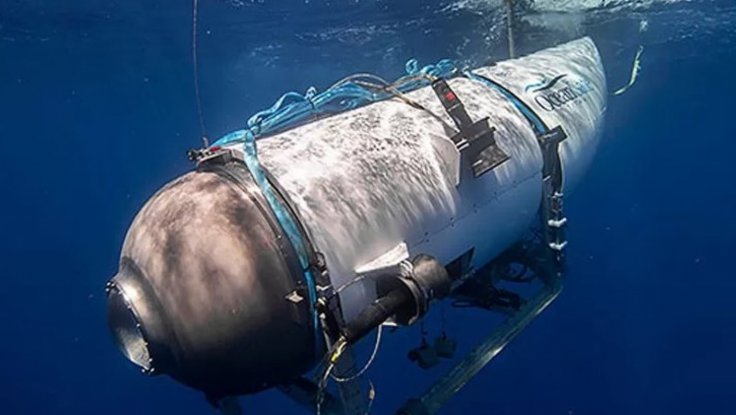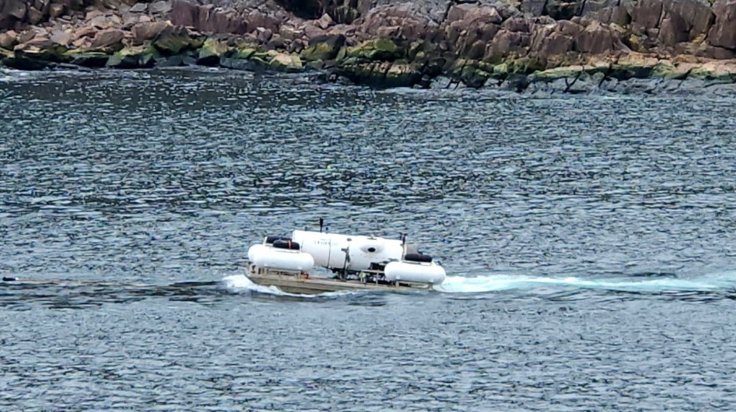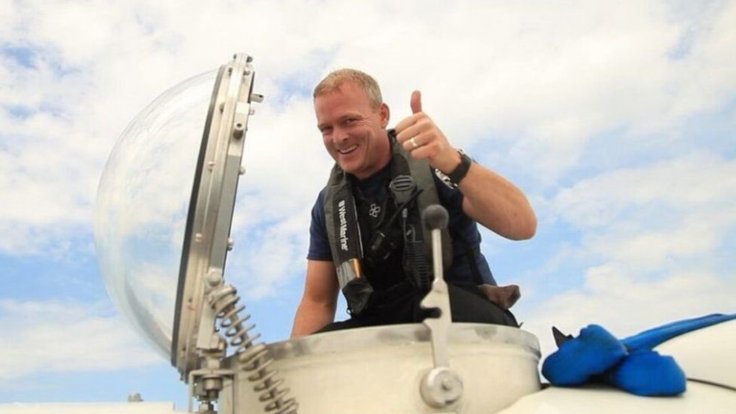The bodies of the five passengers on the ill-fated Titanic submarine that was lost in a "catastrophic implosion", killing them instantly, may never be recovered from the floor of the Atlantic Ocean, the US Coast Guard said on Thursday. In fact, their bodies could be turned into "mummies."
Experts claim the frigid underwater temperatures and the lack of oxygen in the pressurized vessel could turn the bodies of the five tourists into mummies if they aren't recovered. The fanatic search for the five people on the Titan submarine drew to a devastating close on Thursday after a Canadian ship found debris from the vessel on the ocean floor.
Lost in Deep Sea

On Thursday, a remotely operated vehicle (ROV) discovered the pressure chamber of the OceanGate Titan, along with other debris, located approximately 1,600 feet away from the front of the Titanic on the ocean floor.
"This is an incredibly unforgiving environment out there on the sea floor. The debris is consistent with the catastrophic implosion of the vessel. We will continue to work and search the area down there but I don't have an answer on prospects at this time," said Rear Admiral John Mauger of the US Coast Guard.
The cause and timing of the implosion that occurred during the descent of the submarine to the ocean floor, which is approximately 12,500 feet deep, remain unclear.
The Coast Guard added that they "don't have an answer for prospects of recovering the bodies," noting how difficult it would be to look for and remove wreckage from the ocean floor.
To put it in a simpler way, the bodies may be lost forever and they might get preserved under the sea in the form of "mummies."
According to a New York Post report, Nicholas Passalacqua, the director of forensic anthropology at Western Carolina University, said that if the five passengers perished inside the Titan, their bodies would be preserved in an unusual manner within the submersible.
"Generally in an environment without oxygen, remains will not decompose much because the micro and macro organisms that would work to consume and decompose the tissues will be unable to survive," Passalacqua told Insider.

Melissa Connors, a director at Colorado Mesa University's Forensic Investigation Research Station, agreed with the evaluation, saying that the frigid temperatures of the Atlantic Ocean would help in the desiccation of the bodies in the event of a failure in the submersible's heating system.
"So you might end up with mummies," she told the outlet.
How Will That Be Possible
Generally, higher temperatures and the presence of bacteria accelerate the rate of body decomposition. While bacteria typically require oxygen to thrive, anaerobic bacteria can still decompose deceased bodies even in the absence of oxygen.

There is limited research and previous cases of bodies that have been found in highly pressurized underwater vessels. The decomposition process of a typical corpse can vary significantly, ranging from weeks to years, depending on the specific environmental conditions.
The five tourists who lost their lives in the incident include Stockton Rush, the CEO of OceanGate; Paul-Henri (PH) Nargeolet, a former French Navy veteran; Hamish Harding, a British billionaire; Shahzada Dawood, a Pakistani businessman; and his 19-year-old son, Suleman.

"The implosion would have generated a significant, broadband sound that the sonar buoys would have picked up," Rear Admiral John Mauger of the US Coast Guard said at a press conference on Thursday.
The US First Coast Guard District officially announced on Thursday afternoon that debris from the Titan submarine, including its nosecone and the front end bell of the pressure hull, was discovered by a Remotely Operated Vehicle (ROV), an unmanned underwater probe.
"A debris field was discovered within the search area by an ROV near the Titanic," Rear Admiral John Mauger said, adding a "Smaller debris field within the debris field," had been found by Odysseus 6K, an ROV made by Mass. based Pelagic Research Services, which had been launched from the Canadian ship Horizon Arctic.

The Coast Guard also stated that the recovered debris, along with associated information, is currently undergoing evaluation and assessment.
According to rescue expert David Mearns, who had been in touch with people close to some of the victims, the group was informed that the recovered debris consisted of "a landing frame and a rear cover from the submersible."

"Again, this is a very unconventional submarine. That rear cover is that pointy end of it and the landing frame is this little frame that it seems to sit on ... that confirms it's the submersible," Mearns, who was friends with billionaire Harding and Nargeolet, told Sky News.
OceanGate informed the Coast Guard that the Titan submarine had a limited oxygen supply of 96 hours when it submerged near the coast of Newfoundland, initiating a race against time to locate the vessel and its five occupants.

The passengers were sealed inside the submersible with 17 bolts securing the hatch from the outside. Initial speculation suggested that the submersible might be trapped within the Titanic wreckage, but still intact at a depth of 12,500 feet, with oxygen running out.
The US and Canadian Coast Guards worked together to conduct the fanatic search, and numerous other countries also sent hundreds of ships to the area to help in the search.
This was one of the main issues with the rescue efforts was the depth since no successful rescue has ever been made deeper than 1,750 feet below the surface.









